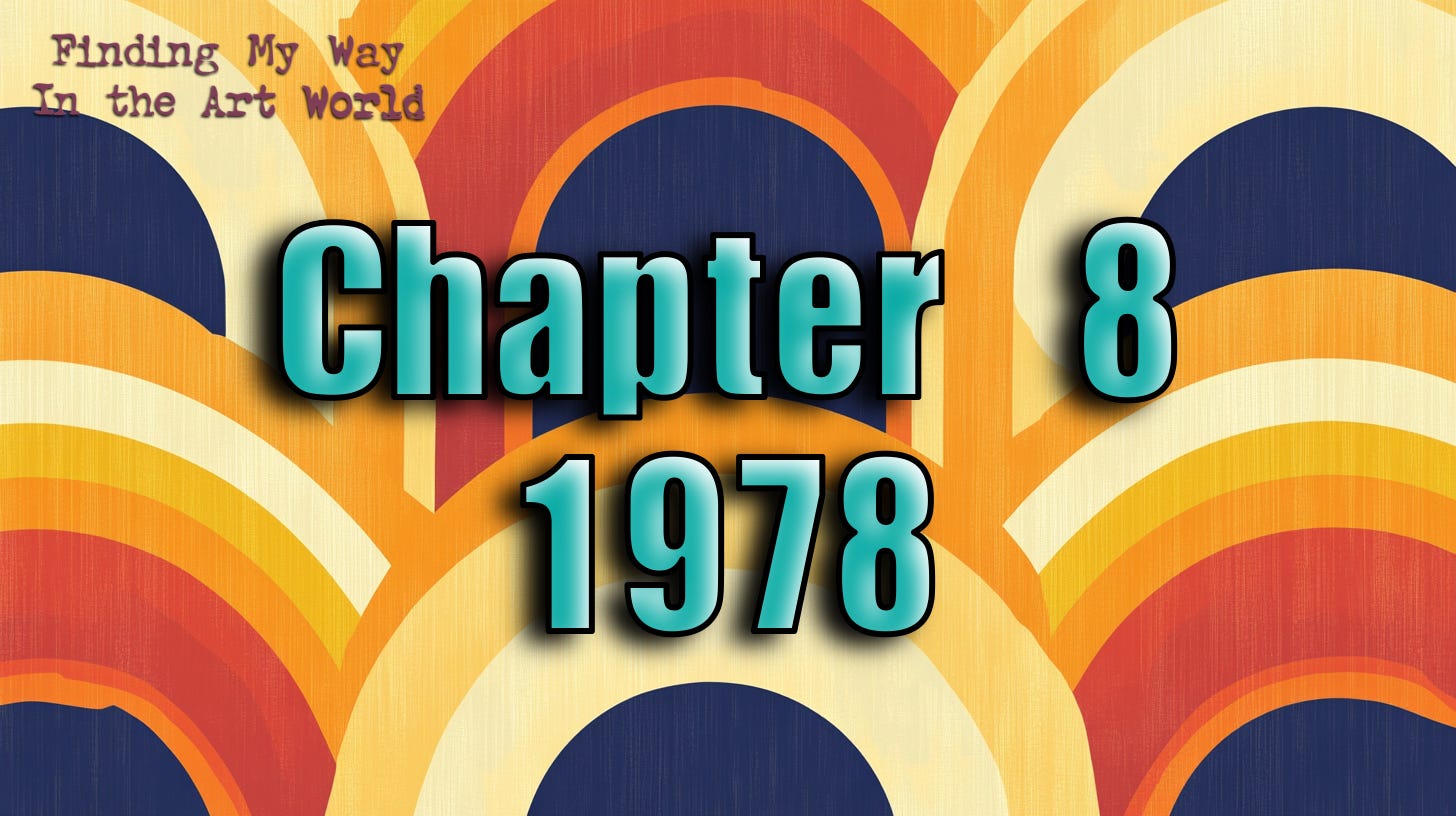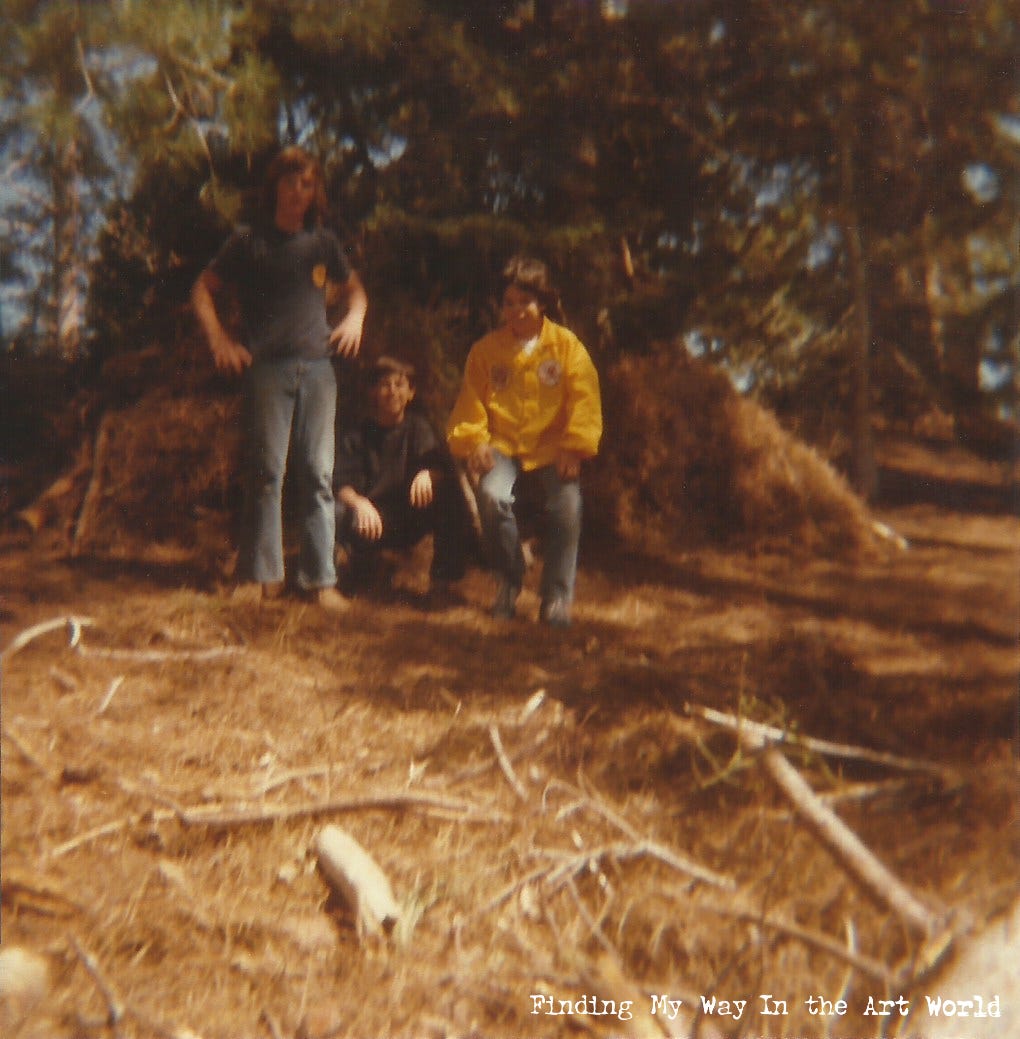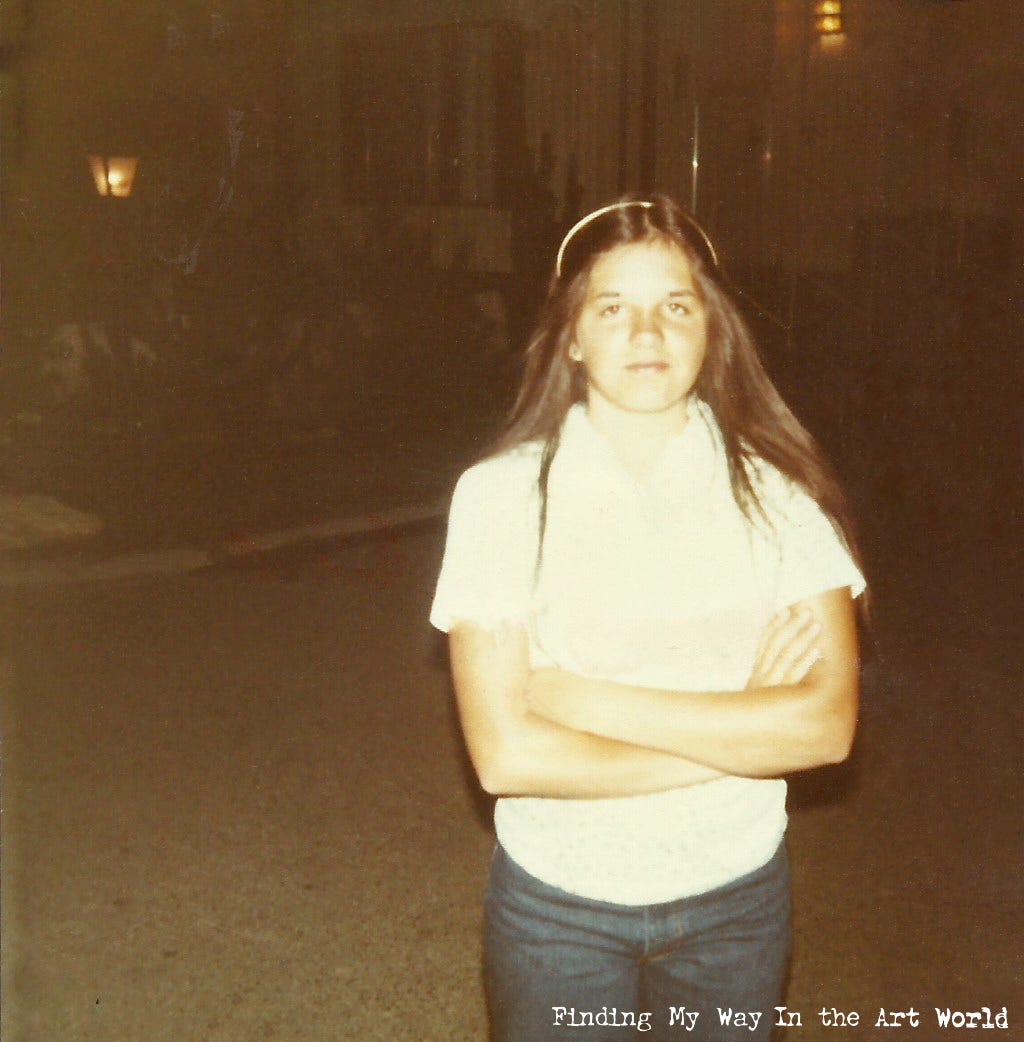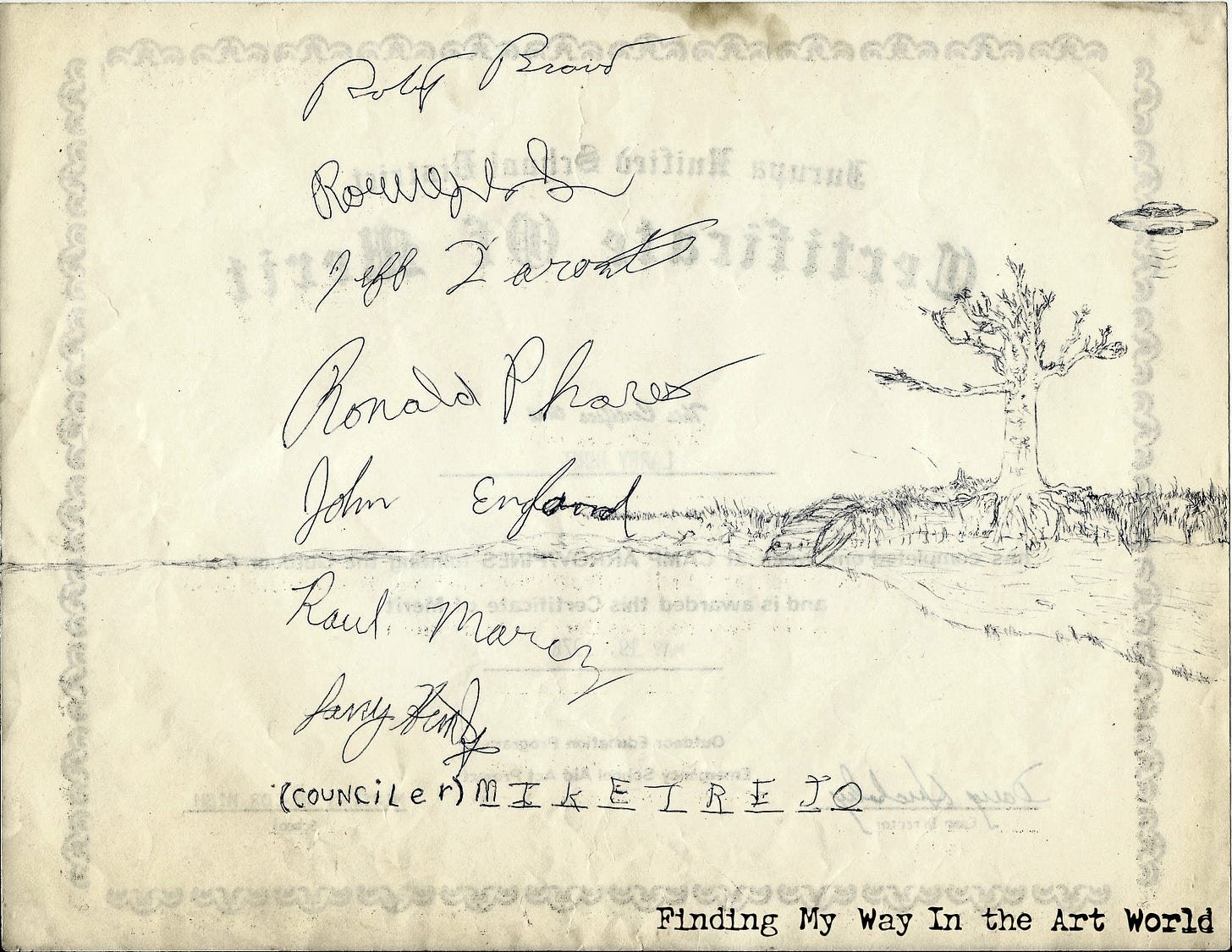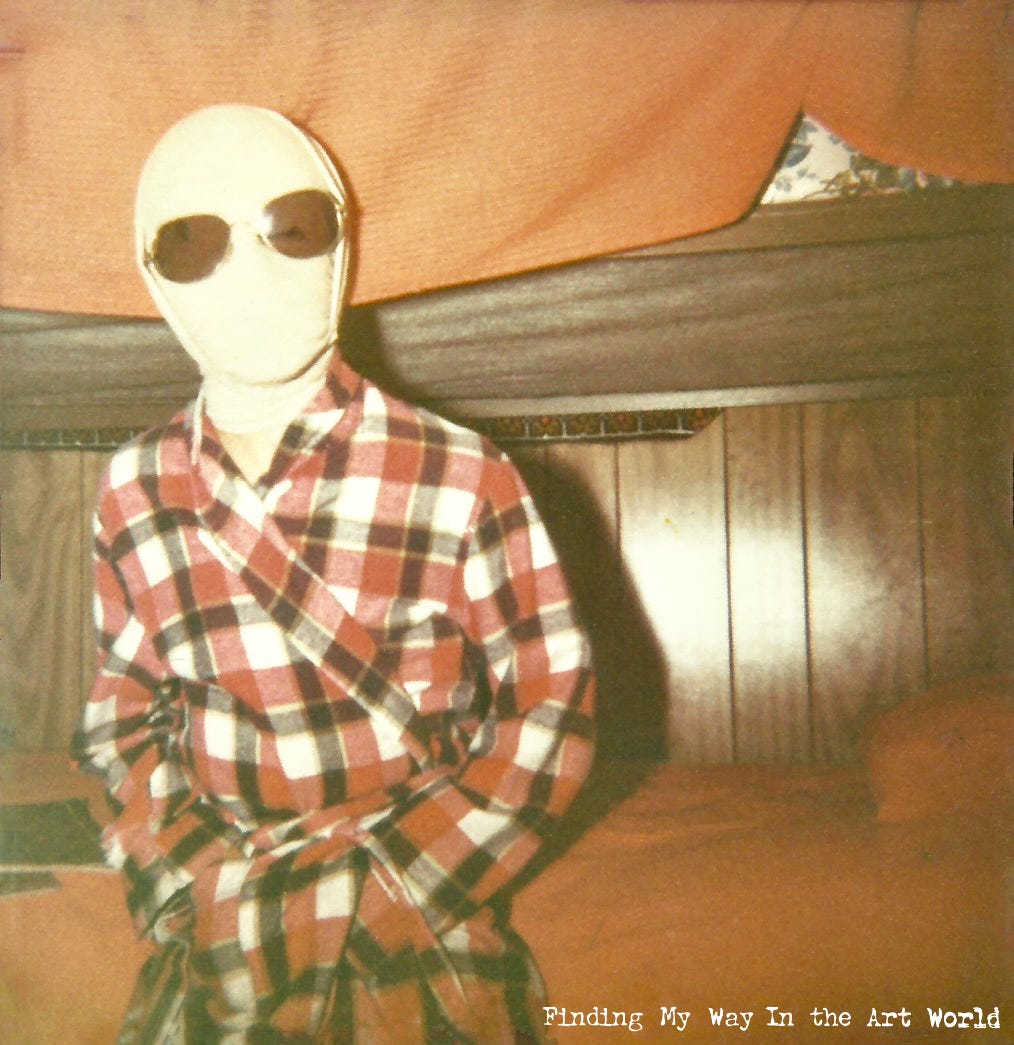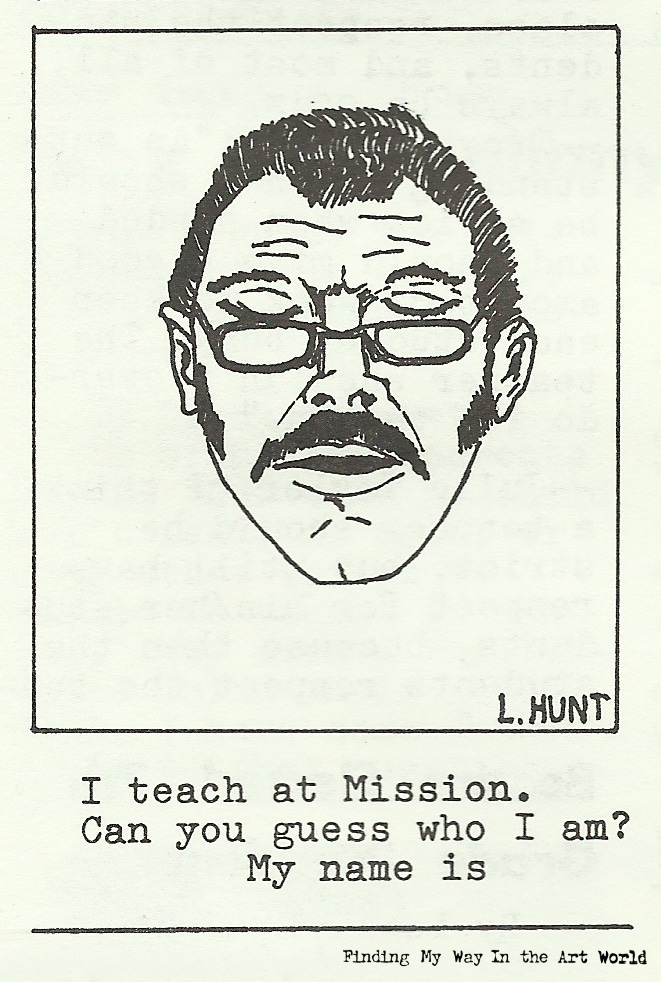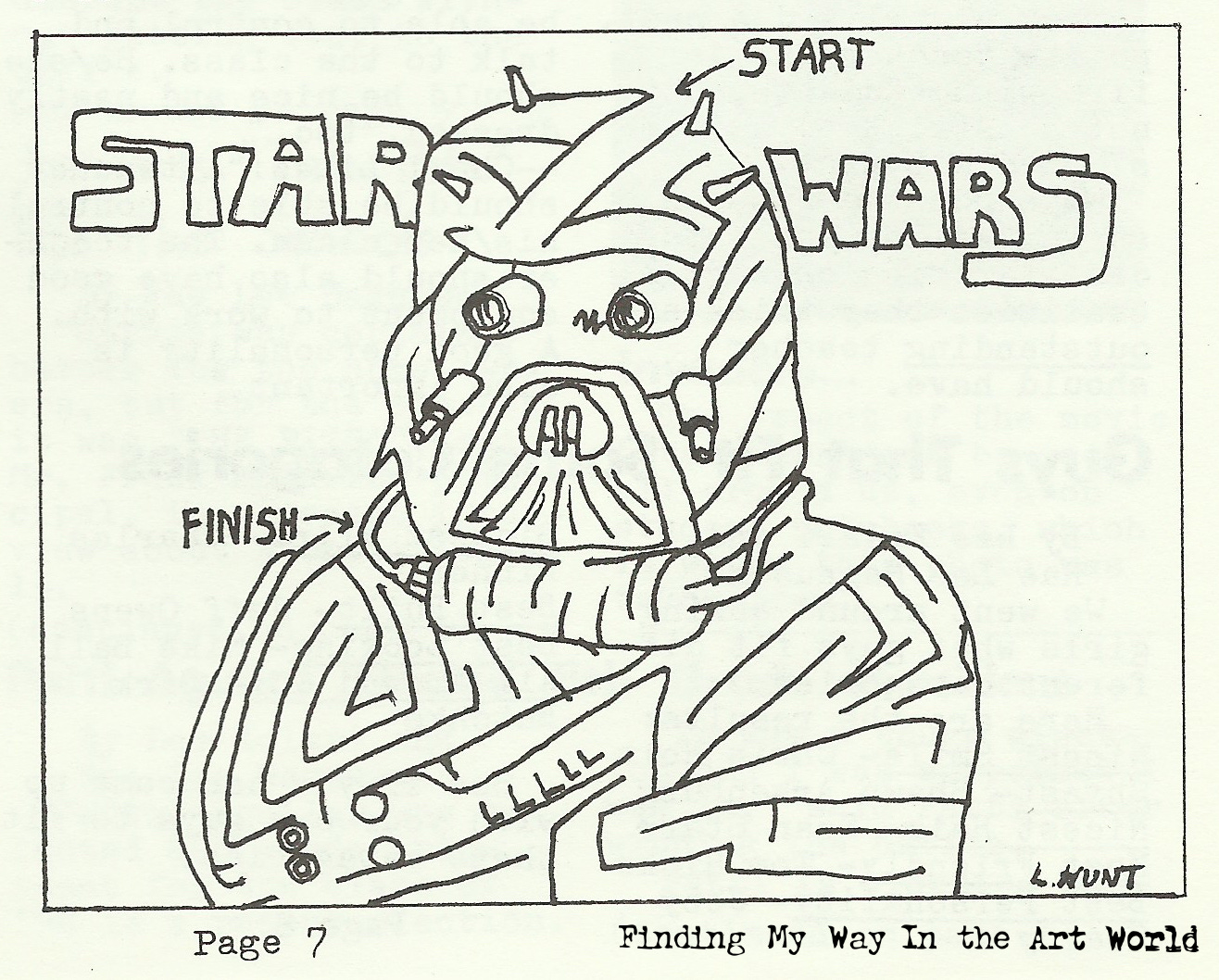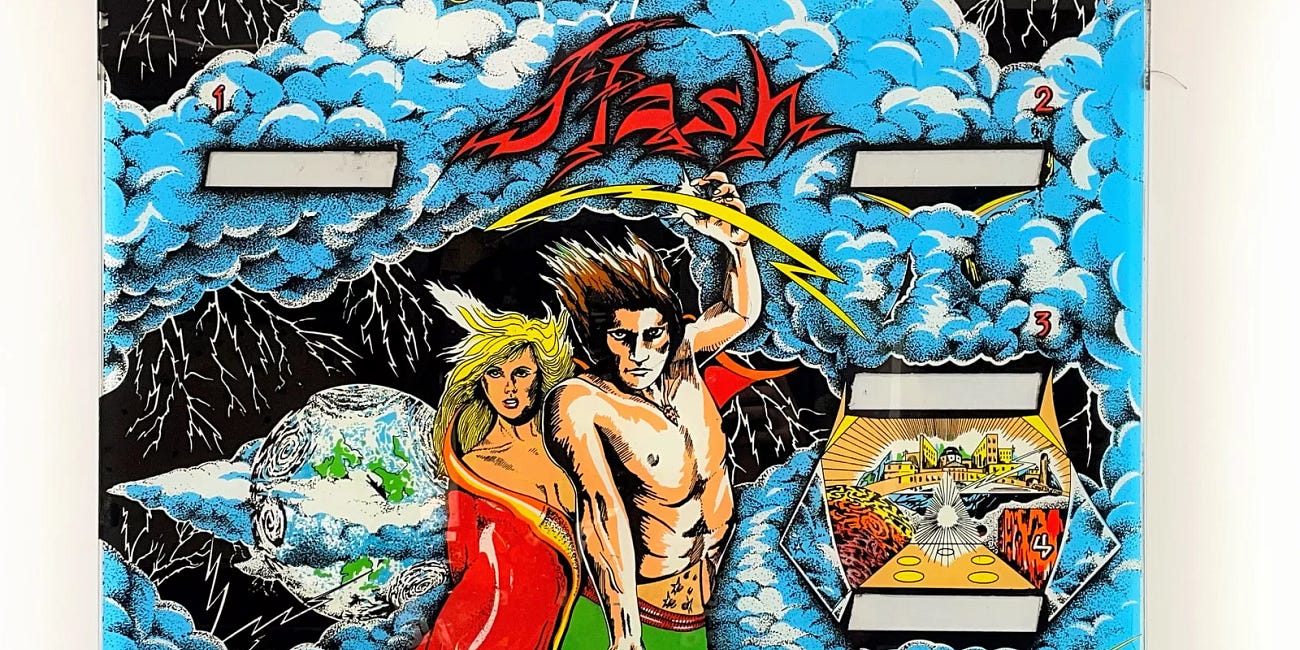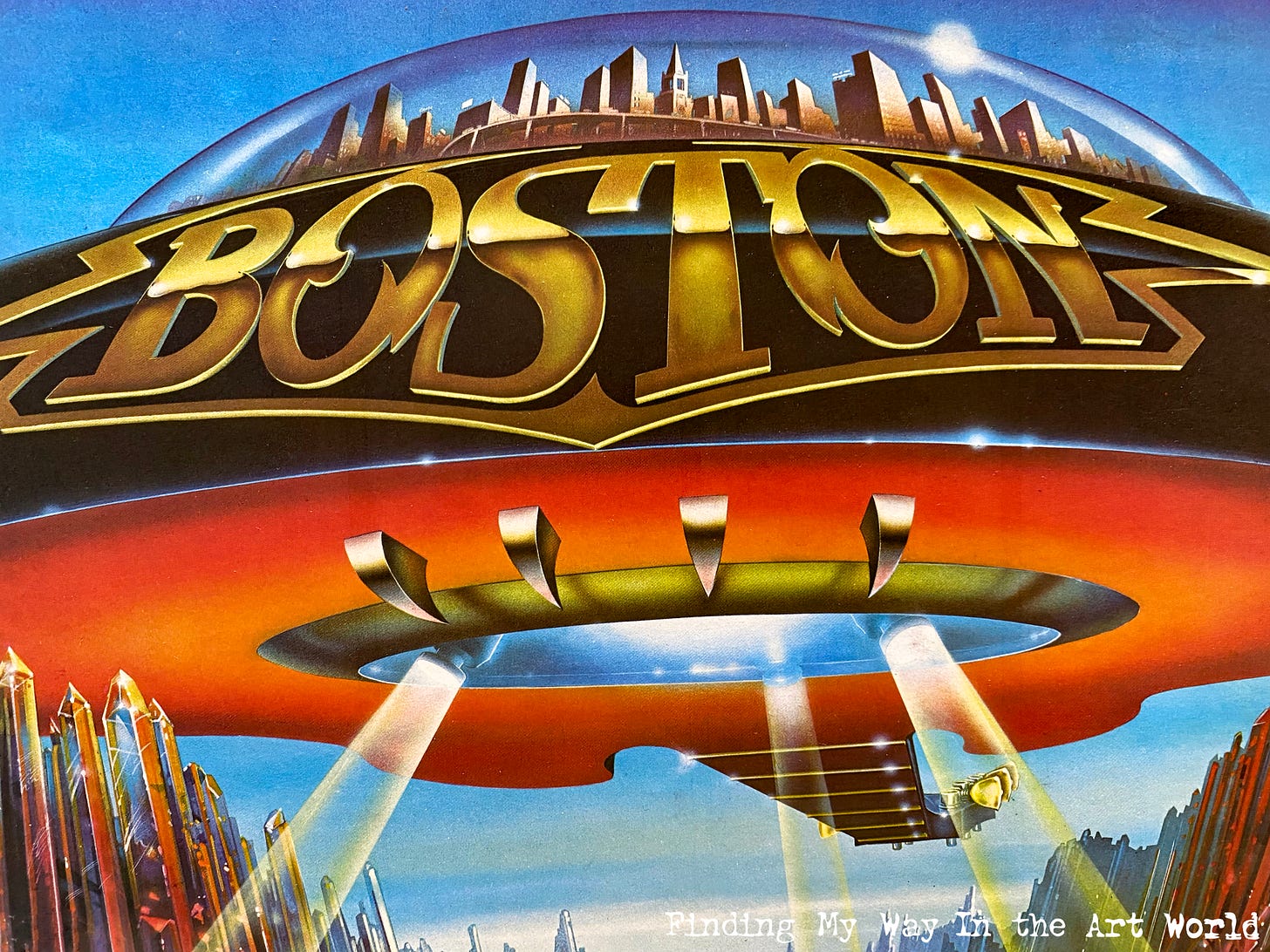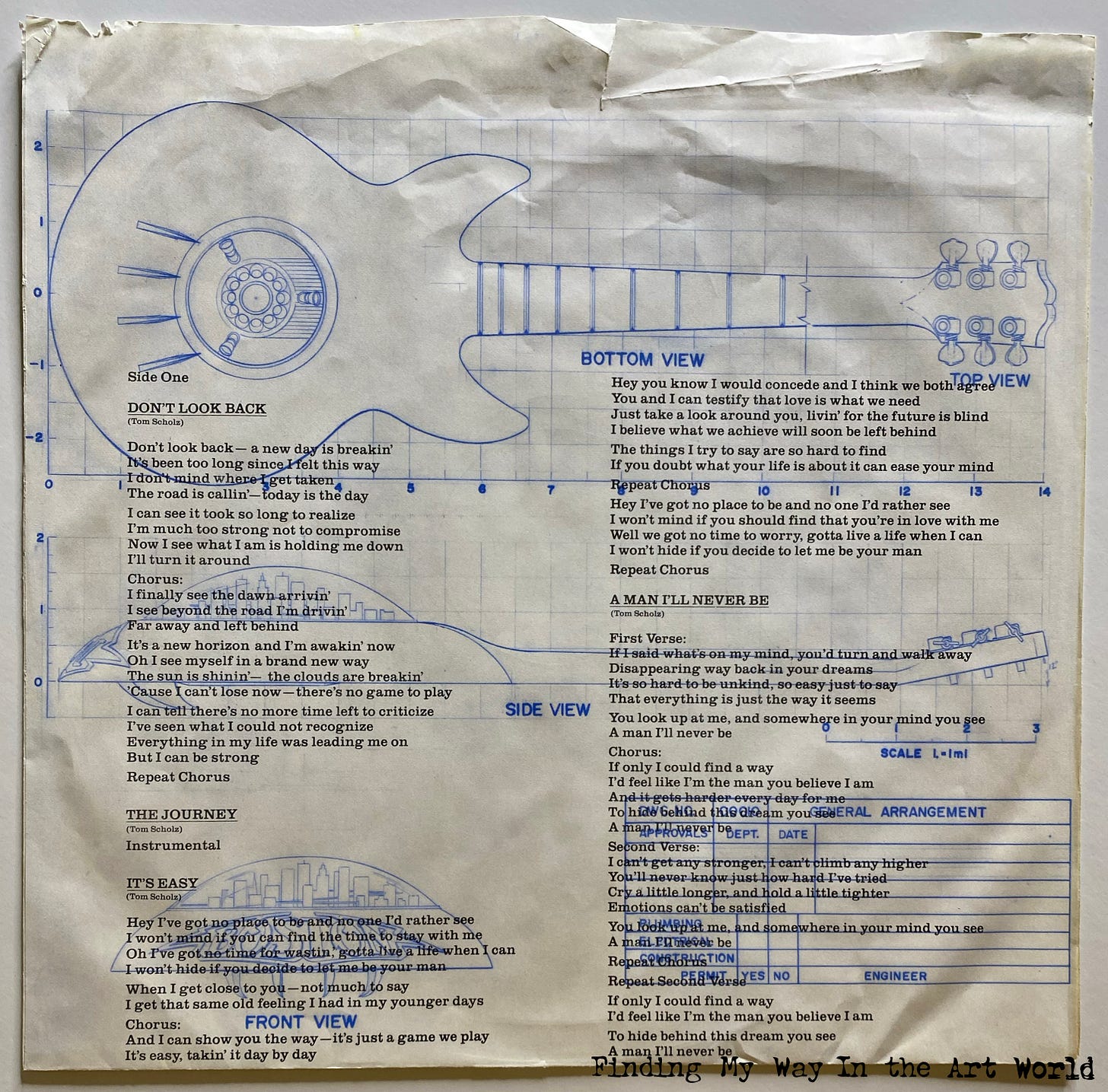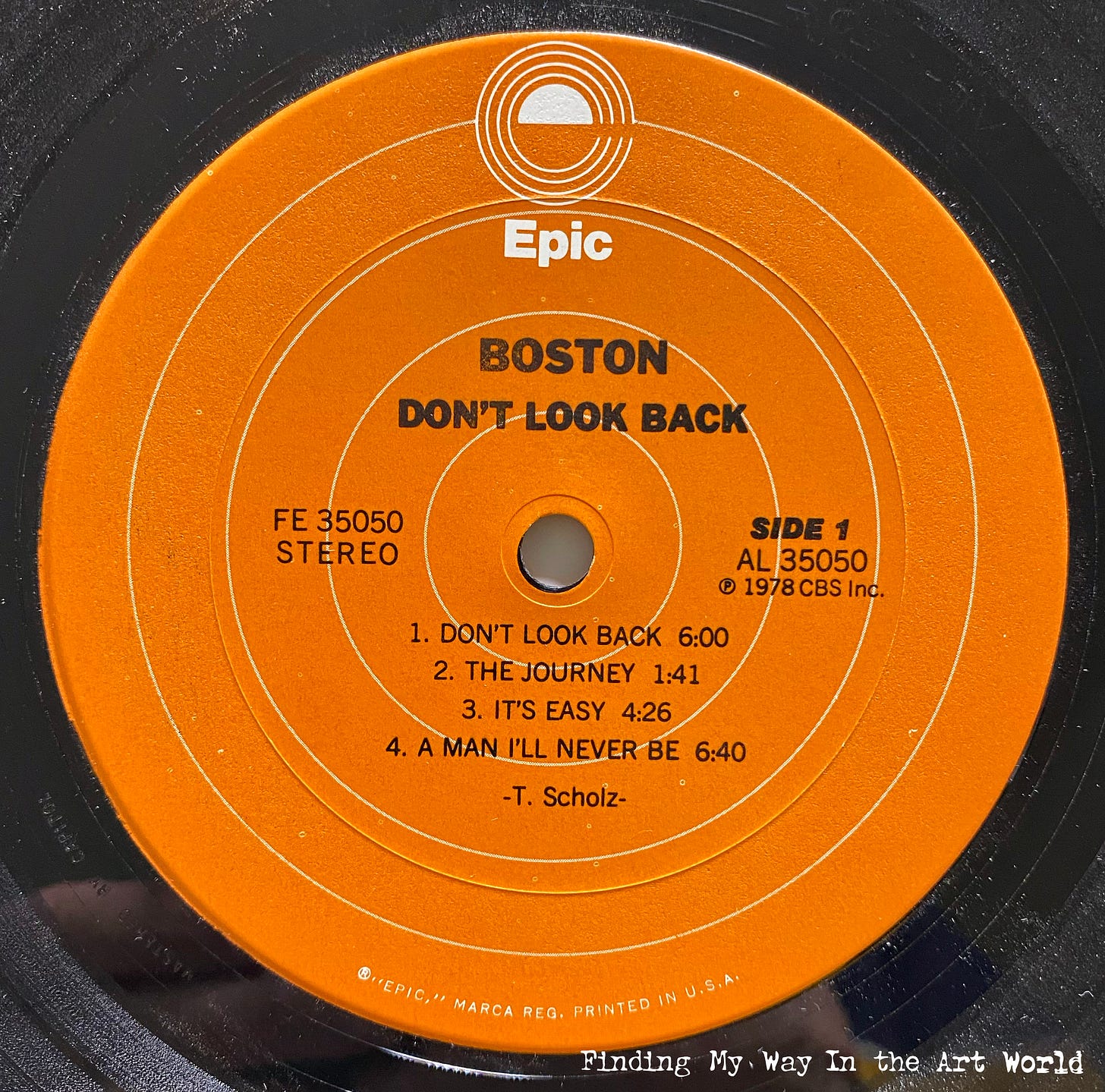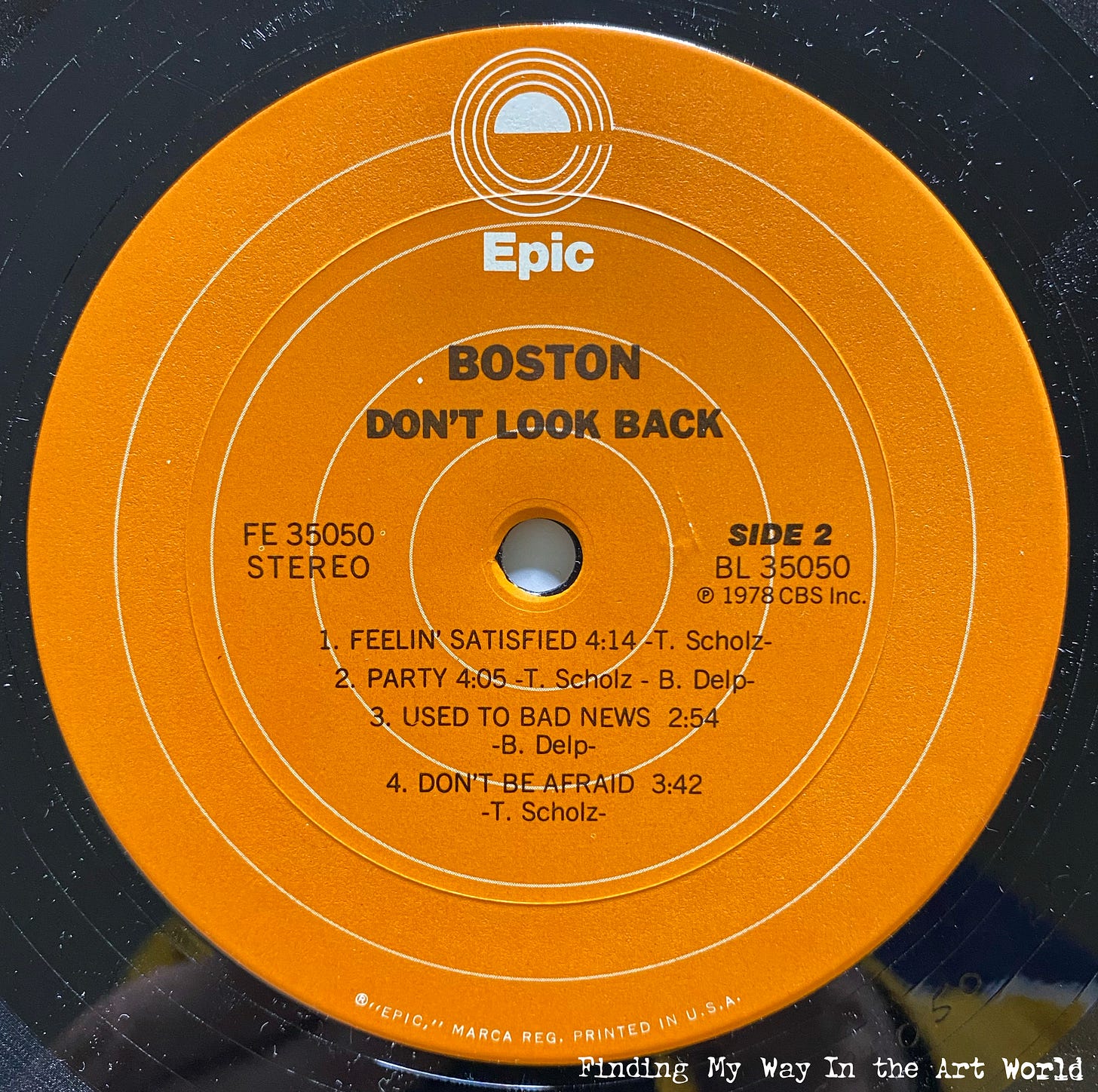Chapter 8: 1978
Life Events | Products | Music | Television | Movies | Styles | Printed Matter | World Events | The Resulting Art
Life Events of 1978
Camp Arrowpines
In mid-May of 1978 I spent a week at Camp Arrowpines in the San Bernardino mountains. As a 12-year-old boy from Mission Junior High School it was an unforgettable adventure filled with camaraderie, exploration, and discovery. The outdoor education program, part of the Emergency School Aid Act project by Jurupa Unified School District, offered a chance to escape the classroom and immerse in nature alongside schoolmates. Building a branch-and-pine-needle lean-to shelter was a highlight, blending teamwork and creativity while learning essential survival skills. Days were packed with activities like hiking through pine-scented trails, identifying wildlife, and learning about ecosystems, while evenings brought campfire stories, singing, and stargazing under the expansive night sky. Earning the Outdoor Code Certificate of Merit at the end of the week felt like a rite of passage, symbolizing newfound respect for nature, responsibility, and the bonds formed with fellow campers in this shared outdoor experience.
One night at Camp Arrowpines, the cabins gathered in the larger meeting cabin for a highly anticipated event: each group’s one-act presentation. Our cabin had decided on a comedic skit from a list of ideas provided, and we were excited to show off our sense of humor. The premise of our act revolved around a mysterious box held by one of the boys, while the rest of us gathered around, curiously speculating what might be inside. The suspense built as we noticed a small drip coming from the bottom of the box. One by one, we took turns touching the drip, tasting it, and guessing—"Coca-Cola!" "No, it’s 7-Up!"—each suggestion more exaggerated than the last, drawing laughter from the audience. Then came the grand reveal: the boy holding the box dramatically opened it, pulled out a stuffed toy cat, and yelled, "It’s a CAT!" The punchline hit perfectly as we all clutched our stomachs, faked being sick, and stumbled offstage in mock horror. The room erupted with laughter, and for a few moments, we felt like stars in our little corner of the outdoors. It was a hilarious, shared memory that perfectly captured the lighthearted spirit of our time at camp.
Cindi
Products
Music
In 1978, both pop and country music delivered iconic hits that shaped the American music scene. Disco was at its peak, led by The Bee Gees, who continued their dominance with songs like "Night Fever" from the Saturday Night Fever soundtrack. This soundtrack became one of the best-selling albums ever, fueling the disco craze. Donna Summer also became the "Queen of Disco" with hits like "Last Dance" and "MacArthur Park."
Meanwhile, in country music, crossover success was becoming more common. Kenny Rogers had a massive hit with "The Gambler," a storytelling song that became one of his signature tracks and showcased the blend of country and pop. Dolly Parton continued her pop-country crossover success with "Two Doors Down" and "Heartbreaker," further solidifying her mainstream appeal. Willie Nelson also had a major hit with "Blue Skies," showing the strength of the outlaw country movement.
1978 reflected the height of disco in pop music and a growing trend of country-pop crossovers, with artists from both genres reaching wider audiences. Disco dominated dance floors, while country artists like Kenny Rogers and Dolly Parton successfully bridged the gap between traditional country sounds and the mainstream pop scene.
Don’t Look Back by Boston
Released on August 2, 1978, the artwork on Boston's Don't Look Back album cover features a stunning, futuristic landscape that perfectly complements the band's grand, space-themed aesthetic. The painting spans both the front and back covers, creating a cohesive and immersive visual experience that was mind-blowing. A massive spaceship, shaped like a guitar, dominates the scene, hovering above a surreal, crystalline forest. The spaceship emits beams of light, giving the impression of exploration taking place. It is the same spaceship from their first album cover and is telling the next event of the story. The Boston logo is prominently displayed on the ship, seamlessly integrating branding with the science-fiction theme.
The vibrant colors—ranging from deep blues of the sky to glowing oranges and reds emanating from the ship—enhance the otherworldly atmosphere. In the background, multiple planets or moons float above the horizon, adding depth and reinforcing the cosmic theme. The crystalline formations on the ground, rendered in sharp, angular detail, suggest a mysterious, alien terrain. This artwork captures the sense of adventure and escapism that defines Boston’s music, making it a perfect visual representation of the album’s themes.
View more images of this album’s artwork and design:1
An Artist in the Art World: Gary Norman.
Gary Norman is an American artist renowned for his work in commercial art and toy prototype design. Among his notable achievements is the creation of the album cover for Boston's 1978 release, Don't Look Back. This artwork, featuring a spaceship shaped like a guitar bearing the band's logo, became iconic in rock music history. In April 2021, the original painting was auctioned for $81,250, reflecting its enduring significance.
Beyond this project, Norman's career encompasses a diverse range of creative endeavors, though detailed public records of his other works remain limited.
Television
TV Programming Overview of 1978
In 1978, American television offered a diverse range of programming that reflected the cultural shifts and varied tastes of viewers. Sitcoms dominated prime-time, with Happy Days and its spin-offs, Laverne & Shirley and Mork & Mindy, drawing massive audiences. Three's Company continued to entertain with its risqué humor and lovable characters, while All in the Family tackled controversial social issues, maintaining its stronghold as a groundbreaking series. Variety shows, though waning in popularity, still featured highlights like the final season of The Sonny & Cher Show and the enduring success of The Carol Burnett Show.
Dramas and action shows gained significant traction, with Charlie’s Angels and Starsky & Hutch leading the charge, delivering fast-paced procedural entertainment. Newer shows like The Incredible Hulk blended action and science fiction, appealing to audiences of all ages. Miniseries and TV movies also thrived, building on the success of Roots the previous year. Productions like Centennial, a historical epic based on James Michener's novel, showcased television's ability to tell complex, richly detailed stories over extended formats, captivating audiences.
Game shows like The Price Is Right, Family Feud, and Wheel of Fortune remained staples of daytime television, while news and sports programming continued to command attention. Super Bowl XII reached record-breaking viewership, reflecting America’s growing obsession with football. For younger viewers, Saturday morning cartoons like Scooby-Doo, Super Friends, and The Pink Panther Show provided a mix of humor and adventure, cementing their place as weekend traditions. By 1978, television had evolved into a medium offering something for everyone, from nostalgic sitcoms to cutting-edge dramas, reflecting the era's cultural dynamism and the growing complexity of the medium.
WKRP in Cincinnati.
Movies
In 1978, American cinema continued to captivate audiences with films that ranged from high-energy musicals to intense horror and gritty drama. Grease, starring John Travolta and Olivia Newton-John, became a massive hit, blending 1950s nostalgia with catchy tunes and dance numbers, making it one of the most beloved musicals of all time. Superman, directed by Richard Donner, brought the iconic DC Comics hero to the big screen in a way that redefined the superhero genre with groundbreaking special effects and an earnest, inspiring portrayal by Christopher Reeve. Animal House, a raunchy college comedy by John Landis, became a cultural touchstone, setting the stage for decades of American comedies. Meanwhile, Halloween, directed by John Carpenter, introduced audiences to the terrifying figure of Michael Myers, sparking the modern slasher genre and influencing horror films for years to come.
Here is a list of some popular movies from 1978:
Grease
Superman
Animal House
Halloween
The Deer Hunter
Every Which Way but Loose
Heaven Can Wait
Invasion of the Body Snatchers
Midnight Express
Coming Home
These films showcased the diversity of American cinema in 1978, from lighthearted musicals and comedies to intense dramas and groundbreaking horror, each making a unique mark on the cultural landscape and inspiring future filmmakers.
Styles
Fashion Trends:
Bell-Bottoms and Flared Jeans - Still popular, though narrower leg styles began to emerge.
Platform Shoes - Both men and women continued to embrace high, chunky heels.
Satin Jackets - Often adorned with logos or team emblems, they were a fashionable casual choice.
Tube Tops - A staple for women during warmer months.
Disco Glam - Sequins, metallic fabrics, and sparkly outfits dominated clubwear.
Denim Everything - Jackets, skirts, and overalls were wardrobe essentials.
Wrap Dresses - Diane von Fürstenberg’s creation remained a go-to look for women.
Tracksuits - Stylish and practical, these became a casualwear favorite.
Hawaiian Shirts - A fun and colorful choice for men.
Wide Ties and Lapels - Reflected the lingering influence of the 1970s' bold tailoring.
Hairstyles:
Feathered Hair - Inspired by Farrah Fawcett, this voluminous style was a must.
Afros - Still a powerful cultural symbol and fashion statement.
Straight, Long Hair - Worn with a center part for a simple, natural look.
Shag Haircuts - A layered, messy style that stayed popular.
Sideburns and Mustaches - Common for men, reflecting the era's grooming trends.
Pop Culture Fads:
Disco Fever - Fueled by Saturday Night Fever and the music of The Bee Gees.
Mood Rings - Continued to be a quirky accessory.
Pet Rocks - Fading but still remembered as a novelty gift.
CB Radios - A hobby for truckers and suburbanites alike.
Star Wars Craze - Merchandise, costumes, and action figures soared in popularity.
Toys and Games:
Simon - The electronic memory game remained a top seller.
Atari 2600 - Video gaming at home was a growing trend.
Star Wars Action Figures - Hugely popular with kids and collectors.
Stretch Armstrong - A stretchy, durable toy that kids loved.
Rubik’s Cube (emerging) - Though not yet at its peak, this puzzle was gaining attention.
Music and Entertainment:
Disco Reigns - Donna Summer, The Bee Gees, and Chic ruled the charts.
Rock Icons - Artists like Fleetwood Mac (Rumours) and The Rolling Stones (Some Girls) continued to dominate.
Grease Soundtrack - Topped charts alongside the movie’s immense popularity.
Saturday Night Fever Soundtrack - A disco phenomenon.
FM Radio - Became essential for album-oriented rock fans.
Lifestyle Trends:
Jogging - The fitness craze was in full swing.
Macramé - Plant hangers and wall art were trendy home décor items.
Back-to-Nature Movement - Gardening and outdoor recreation grew in popularity.
Recycling Awareness - Environmentalism was gaining ground.
Self-Help Books - Continued popularity with titles focusing on personal growth.
Technology and Entertainment:
VHS vs. Betamax - The format war for home video players intensified.
Digital Watches - Still a symbol of high-tech fashion.
Color TV - Almost universal in American households by now.
Polaroid Cameras - Instant photography remained a hit.
Boom Boxes - A portable music staple, especially for disco and funk fans.
Sports and Leisure:
Skateboarding - Growing popularity with new tricks and competitions.
Roller Skating - Disco and roller rinks were inseparable.
Fishing and Camping - Reflecting the back-to-nature trend.
Biking - Both for recreation and exercise.
Yoga - Continued as part of the wellness movement.
Cultural Touchstones:
Grease - The movie and its music were cultural phenomena.
Saturday Night Fever - Still influencing fashion and dance trends.
Charlie's Angels - A hit show inspiring women in action roles.
Roots Miniseries - Its cultural impact was still being felt.
Lava Lamps - Funky home décor that reflected the groovy aesthetic.
Printed Matter
World Events
1978 was a year of significant global events, especially in politics and diplomacy. One of the most groundbreaking moments occurred in September with the signing of the Camp David Accords. Egyptian President Anwar Sadat and Israeli Prime Minister Menachem Begin, brokered by U.S. President Jimmy Carter, agreed on a framework for peace, leading to the Egypt-Israel Peace Treaty. This was a major step toward peace in the Middle East.
In the Catholic Church, Pope John Paul II became the first non-Italian pope in over 450 years, after the short papacy of John Paul I, who died just 33 days into his term. John Paul II’s election would have a profound impact on the Church and global politics, especially in his native Poland.
Meanwhile, the world was gripped by the Jonestown massacre in November, when over 900 followers of cult leader Jim Jones died in a mass murder-suicide in Guyana. This shocking event drew attention to the dangers of cults and raised questions about mind control and manipulation.
In the realm of human rights, Argentina’s "Dirty War" continued, with widespread state-sponsored violence against dissidents and civilians. This drew global condemnation and increased attention to human rights abuses in Latin America.
Culturally, 1978 also saw the release of Grease, a film that became an iconic representation of 1950s nostalgia, and the debut of the first test-tube baby, Louise Brown, marking a scientific breakthrough in fertility treatments.
These events made 1978 a year of significant changes, from global diplomacy to advancements in science and human rights.
The Resulting Art
U.F.O. Over Tree, Bridge, and Stream, May 19, 1978.
Presentation: A flying saucer hovers above a tree at the edge of a stream. There is a wooden bridge over the stream.
Medium: Ink on paper.
Comments:
This was drawn on the back of my Outdoor Code Certificate of Merit that I received at Camp Arrowpines. The nature scenes were inspired by the woodland elements I observed during the week. The U.F.O. is probably inspired by the sleeve artwork for the 45 single of Come Sail Away by Styx, or the album cover of ELO’s Out Of the Blue (or both). The signatures are from my cabin mates. It looks like the letters spelling out the councillor’s name may have been part of the guessing game Hangman, played on a separate piece of paper. During this time I was experimenting with adding a star after my signature.
Drawn free-hand.
The Invisible Man Costume, July 1978.
Presentation: The television character The Invisible Man standing in a room.
Medium: Costume and photography.
Notable art techniques:
Costume design.
Inspirations:
Television program.
Comments:
This photo was taken as an entry to a Dynamite magazine contest.
Designed free-hand.
Guess My Name, December, 1978.
Presentation: Portrait of a teacher at Mission Junior High School.
Medium: Ink on paper.
Comments:
This artwork was for The Mustang Express school newspaper2. I was allowed to leave class and sit in on this teacher’s class in order to do the drawing.
Drawn free-hand.
Star Wars Tusken Raider Maze, December, 1978.
Presentation: A Tusken Raider from the Star Wars movie is made into a maze. There’s START and FINISH text with arrows. STAR WARS text is hand-drawn.
Medium: Ink on paper.
Comments:
This artwork was for The Mustang Express school newspaper. See full newspaper page.
Drawn free-hand.
Title, 1978.
[Image. Remember to add caption.]
Presentation: Describe the subject of the art.
Medium: Type.
Notable art techniques:
Ex: Cross-hatching.
Inspirations:
Possibly this, or definitely this (Include footnote or link).
Comments:
Viewpoint and memories about the art.
Projected and traced. Drawn free-hand.
© L.HUNT
THERE’S MORE TO THIS STORY!
The fully illustrated, printed book Finding My Way In the Art World: Book Eight, 1978 is available HERE.
Finding My Way In the Art World Soundtrack: Book Eight, 1978 is available HERE.
The Songs:
FIGURES CROSS-REFERENCED WITH ARCHIVAL NOTES
This section lists every figure published in this book alongside its corresponding archival note number for research and catalog reference. Archival Note numbers refer to the permanent catalog maintained by L.HUNT.
(SAMPLE PLACEHOLDER)
Book 01: Finding My Way In the Art World, 1966-1971
Figure 01.001 – AN-21.004
Early sketch of abstract form, 2003
ARCHIVAL NOTES FOR BOOKS 1–8 This section contains cataloged references to all figures, uncut home movie QR codes, and supporting materials spanning the first eight books of this series. Each entry is labeled with a unique archival number for cross-reference in the index.
Archival Note AN 1.001
Uncut Super 8 footage, March 1966. Family at Eagle Mountain trailer. Related edited video: Fig. 1.018.
CONTINUE READING THE BOOK:
Chapter 9: 1979
Life Events | Merchandise | Music | Television | Movies | Styles | Printed Matter | World Events | The Resulting Art


